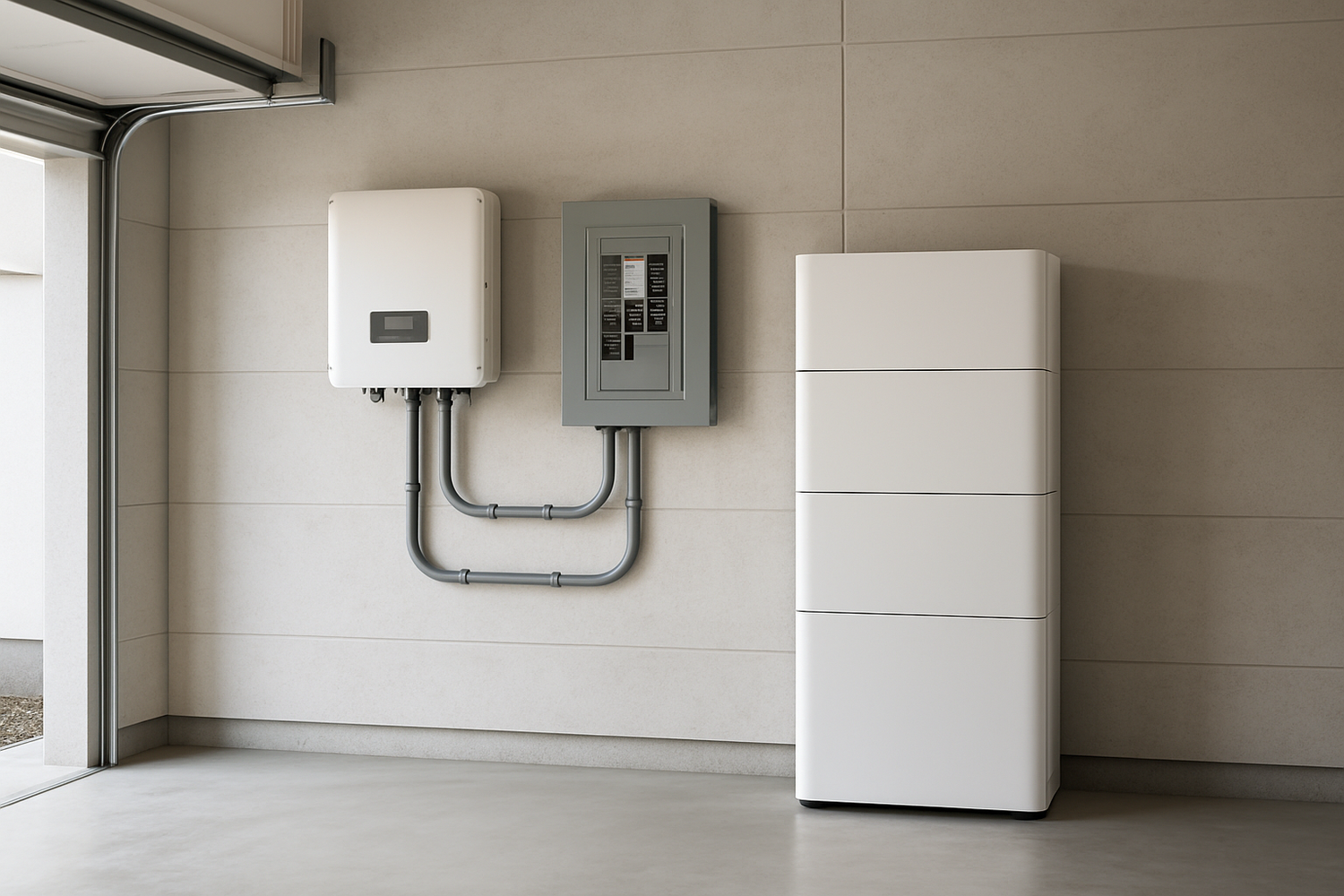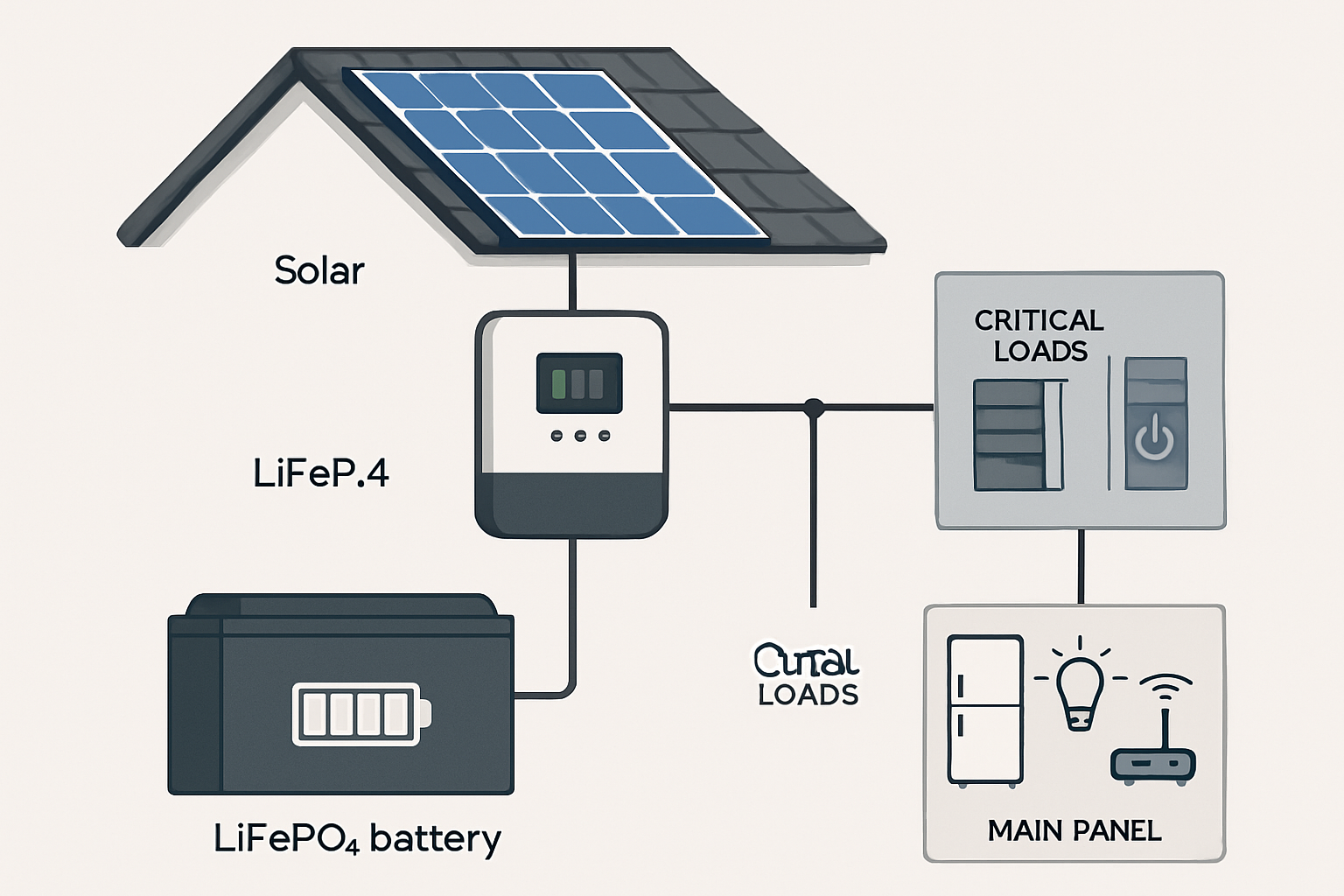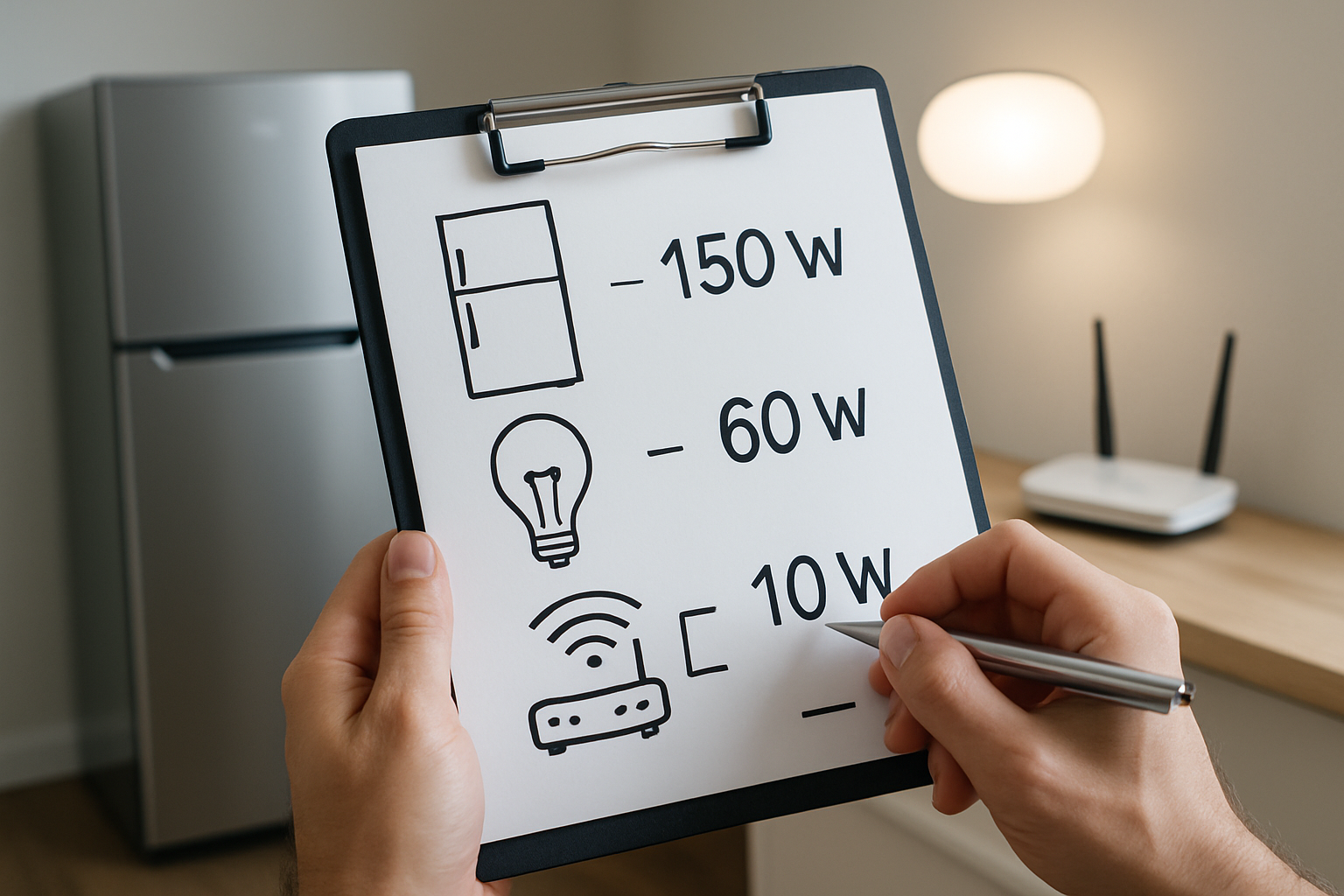Power outages are more than an inconvenience; they can disrupt your life, compromise your safety, and lead to financial loss. A home energy storage system provides a reliable buffer against grid instability, offering peace of mind and a direct path to energy independence. But how do you determine the right size for your emergency battery? A system that is too small will leave you in the dark, while an oversized one is an unnecessary expense. This text explains the process of sizing an emergency battery tailored to your specific needs.
First, Identify Your Critical Loads
The first step in battery sizing for emergency power is to decide which devices and appliances are essential during an outage. These are your 'critical loads.' Think about what you absolutely need to keep running for safety, comfort, and communication. For most households, this list includes a combination of the following:
- Refrigeration: Refrigerator and freezer to prevent food spoilage.
- Lighting: Key lights in areas like the kitchen, bathroom, and living room.
- Communication: Internet router, modem, and phone chargers.
- Safety and Health: Medical devices (like a CPAP machine), sump pumps, or well pumps.
- Comfort: A small fan or a specific heating appliance, depending on the climate.
Making a precise list of these items is the foundation of an accurate sizing calculation.
Calculating Your Energy and Power Requirements
Once you have your list of critical loads, you need to figure out how much energy they consume. This involves two key metrics: power (kilowatts, kW) and energy (kilowatt-hours, kWh).
Distinguishing Between Power (kW) and Energy (kWh)
Think of power (kW) as the speed at which you use electricity. It’s the total amount of electricity your appliances could draw at any single moment. Energy (kWh) is the total quantity of electricity consumed over a period. A correctly sized battery must meet both your peak power demand and your total energy consumption needs over the duration of a potential outage.
Calculating Your Needs: A Step-by-Step Approach
To calculate your requirements, you can create a simple table. List each critical appliance, its wattage (power consumption), and the number of hours you expect to use it during a 24-hour outage.
Formula: (Appliance Wattage × Hours of Use) / 1000 = Daily Energy Consumption (kWh)
| Appliance | Power (Watts) | Daily Hours of Use | Energy (Wh) | Energy (kWh) |
|---|---|---|---|---|
| Refrigerator | 200 W (running) | 8 hours | 1600 Wh | 1.6 kWh |
| LED Lights (5) | 50 W (total) | 6 hours | 300 Wh | 0.3 kWh |
| Internet Router/Modem | 15 W | 24 hours | 360 Wh | 0.36 kWh |
| Phone Chargers (2) | 20 W (total) | 4 hours | 80 Wh | 0.08 kWh |
| CPAP Machine | 60 W | 8 hours | 480 Wh | 0.48 kWh |
| Total | 345 W | 2820 Wh | ~2.8 kWh |
In this example, you would need a battery with at least 2.8 kWh of usable capacity to last 24 hours. Your peak power demand would be the sum of all appliances running simultaneously. You also need to account for 'surge' power—the extra electricity large appliances like refrigerators draw when they first start up. Your system's inverter must be able to handle this peak load.
Key Factors That Influence Battery Size
Beyond your basic load calculation, several other factors play a crucial role in sizing an emergency battery system effectively.
Duration of Backup Power
How long do you need your power to last? While a 24-hour backup is a common goal, you might need more if you live in an area prone to extended outages from storms or other events. Consider your local grid reliability and potential weather risks when deciding on your desired autonomy.
The Impact of Solar Integration
Integrating solar panels with your battery storage changes the equation significantly. A solar array can recharge your battery during the day, even during a grid outage. This means you might not need a battery large enough to cover multiple days of use on its own. With solar, you can achieve true energy independence, as your system can potentially run indefinitely off-the-grid. According to the U.S. Department of Energy, microgrids that combine solar and storage are a key strategy for increasing community resilience. A solar inverter is the component that makes this synergy possible, managing the flow of energy between your panels, battery, and home.
Understanding Battery Specifications
When comparing batteries, look beyond just the total capacity. Key performance metrics are vital for making an informed decision.
- Depth of Discharge (DoD): This indicates how much of the battery's total capacity you can safely use. Modern Lithium Iron Phosphate (LiFePO4) batteries often have a DoD of 90-100%, offering more usable energy than older battery chemistries.
- Round-Trip Efficiency: This measures how much energy is lost during the charge and discharge cycle. A higher efficiency (typically above 90% for LiFePO4) means less wasted energy. For a deeper analysis of these metrics, consult a comprehensive guide on solar storage performance.
- Scalability: The energy landscape is evolving. As the IEA's report on Clean Energy Innovation highlights, modularity is a key attribute of modern energy technologies. Many home energy storage systems are modular, allowing you to start with a capacity that meets your current needs and budget, and then add more batteries later if your needs grow.
Your Path to Reliable Power
Sizing an emergency battery is a process of careful evaluation. By identifying your critical loads, calculating your daily energy use, and considering factors like backup duration and solar integration, you can design a system that provides reliable power when you need it most. This preparation not only protects your home and family but also empowers you with greater control over your energy future. A well-designed energy storage system is a powerful step towards achieving true home energy independence.
Frequently Asked Questions
How long will a home battery last during a power outage?
The duration depends entirely on the battery's capacity (kWh) and the amount of power you are drawing. A larger battery powering only a few essential devices will last much longer than a smaller battery trying to run multiple high-power appliances.
What is the difference between kW and kWh for a battery?
Kilowatts (kW) measure power, which is the rate at which the battery can deliver electricity. Kilowatt-hours (kWh) measure energy, which is the total amount of electricity the battery can store. You need enough kW to power your devices simultaneously and enough kWh to run them for the desired amount of time.
Can I add more batteries to my system later?
Yes, many modern home energy storage systems are designed to be modular and scalable. This allows you to expand your storage capacity in the future by adding more battery units to your existing setup.
Do I need solar panels for an emergency battery system?
No, a battery can be charged from the grid to provide backup power. However, adding solar panels allows you to recharge the battery during an extended outage, providing potentially indefinite power and greater energy independence.





Leave a comment
All comments are moderated before being published.
This site is protected by hCaptcha and the hCaptcha Privacy Policy and Terms of Service apply.